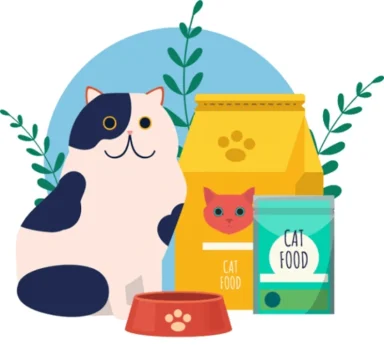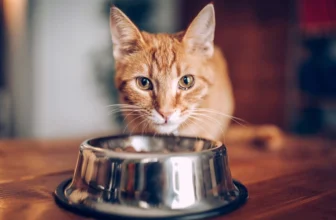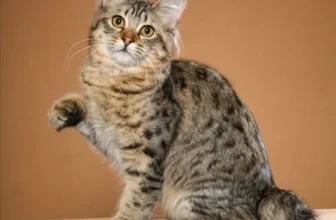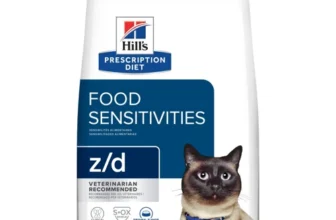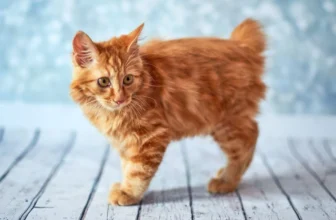As a loving cat owner, you want to ensure that your furry friend is receiving all of the essential nutrients needed for a healthy and happy life. One crucial aspect of a feline’s diet is macronutrients. Macronutrients are the building blocks of a balanced diet and are critical for maintaining a healthy weight, supporting a strong immune system, and ensuring the proper function of essential bodily functions. In this comprehensive guide, we will take a deep dive into balancing Macronutrients in homemade diets for American Bobtail Cats. From calculating macronutrient ratios to selecting the right ingredients and preparing the food, we will cover all the bases to help you provide your feline companion with a high-quality, balanced diet.
What are Macronutrients?
Macronutrients are the essential nutrients that are required by American Bobtail cats and other animals in large quantities to maintain and support their normal growth and functioning. These macronutrients can be classified into three main categories: proteins, fats, and carbohydrates.
Proteins are the building blocks of tissues in the body, including muscles, skin, and hair. They also play a crucial role in the production of enzymes, hormones, and other essential body fluids. Proteins help support the immune system, promoting wound healing, muscle repair and cell regeneration. Proteins can be found in a variety of sources such as meat, poultry, fish, and dairy products.
Fats, also known as lipids, are essential for many bodily functions, such as insulation and cushioning of organs, the absorption of fat-soluble vitamins, and providing a source of energy. Healthy fats, such as those found in fish, eggs, and certain plant oils like flaxseed and olive oil, are especially important for a healthy heart and brain.
Carbohydrates are the main source of energy for American Bobtail cats and other animals. They can be divided into two categories: simple and complex. Simple carbohydrates are found in sugar, honey, and fruit, while complex carbohydrates are found in grains, legumes, and most vegetables. Complex carbohydrates are often more nutritious and can provide a steady source of energy throughout the day.
It’s important to note that while macronutrients are essential for your cat’s health, it’s equally important to ensure a balance between them. An excess of one macronutrient can have a negative impact on your cat’s health and may lead to obesity, diabetes, or other health problems.
To ensure proper nutrition, it’s crucial to understand the macronutrient requirements of American Bobtail cats. You can find more information on the nutritional requirements by following the link here.
Creating homemade diets for American Bobtail cats can be an option for pet owners who want more control over their cat’s nutrition. However, it’s important to be aware of the risks and benefits of homemade cat food. For more information on the pros and cons of feeding homemade diets, click on the link here.
The Importance of Balance
A balanced diet is essential for the optimal health and well-being of American Bobtail cats. A well-balanced diet ensures that cats receive adequate amounts of essential nutrients required for bodily functions such as growth, repair, and maintaining overall health. It is important to understand that each macronutrient plays a unique role in a cat’s diet, and an imbalance or deficiency of any nutrient can lead to various health issues. For instance, a lack of protein or essential fatty acids can result in muscle atrophy and weight loss. Similarly, excess carbohydrates can lead to obesity, insulin resistance, and diabetes in cats.
Protein is essential for cats as it plays a crucial role in maintaining healthy skin and coat, repairing body tissues, and providing energy for daily activities. Choosing the best protein sources is crucial to ensure that your cat receives all the essential amino acids needed for optimal health. However, too much protein, particularly from animal sources, can also lead to kidney damage, especially in older cats with pre-existing kidney conditions.
Fats are concentrated sources of energy and are essential for proper bodily functions. They are necessary for proper absorption of fat-soluble vitamins, maintaining healthy skin and coat, and providing energy. However, excessive amounts of fats in a cat’s diet can lead to obesity, which is a significant health concern among American Bobtails.
Carbohydrates are a source of energy, but cats do not require carbohydrates in their diet as much as they need protein and fats. Excess carbohydrates can lead to obesity and other health issues, including diabetes.
It is essential to balance macronutrients in homemade diets for American Bobtail cats to provide optimal nutrition and avoid nutrient deficiencies, which can lead to adverse health effects. You can consult with a veterinary nutritionist to develop a balanced diet specific to your cat’s needs. Also, adding supplements to your cat’s diet can help them receive the essential nutrients that they may not be getting in their diet.
It is also essential to avoid common mistakes while preparing a homemade diet and ensure proper food handling and storage to avoid contamination. Check out our article on Bobtail Cat Homemade Diet Mistakes to know more about common mistakes pet parents make while preparing homemade cat food.
A properly balanced diet along with proper feeding and food handling practices can help ensure your American Bobtail cat remains healthy and happy for years to come.
Macronutrient Requirements for American Bobtail Cats
As a pet owner, it’s important to understand the specific macronutrient requirements of American Bobtail cats to ensure their overall health and wellbeing. Proteins, fats, and carbohydrates are the three main macronutrients that provide energy and support various bodily functions.
Protein: American Bobtail cats require high levels of protein, which is crucial for their muscle development, repair, and maintenance. The ideal daily protein intake for cats is around 50-60% of their total diet. Protein sources for cats can include meat, poultry, fish, and eggs.
Fat: Fats are an essential source of energy for American Bobtail cats and are also important for maintaining healthy skin and coat. Fats should make up approximately 30-35% of a cat’s daily diet. Good fat sources for cats include oily fish, chicken, and beef fat.
Carbohydrates: Unlike humans, cats don’t have a high requirement for carbohydrates. However, they still need some in their diet to provide energy and promote digestive health. Carbohydrates should make up around 5-10% of a cat’s daily diet. Good carbohydrate sources for cats include sweet potatoes and peas.
It’s important to note that the macronutrient requirements for American Bobtail cats may vary depending on their age, activity level, and overall health. It’s always best to consult with a veterinarian or animal nutritionist to ensure that your cat’s diet is balanced and meets their nutritional needs.
Calculating Macronutrient Ratios
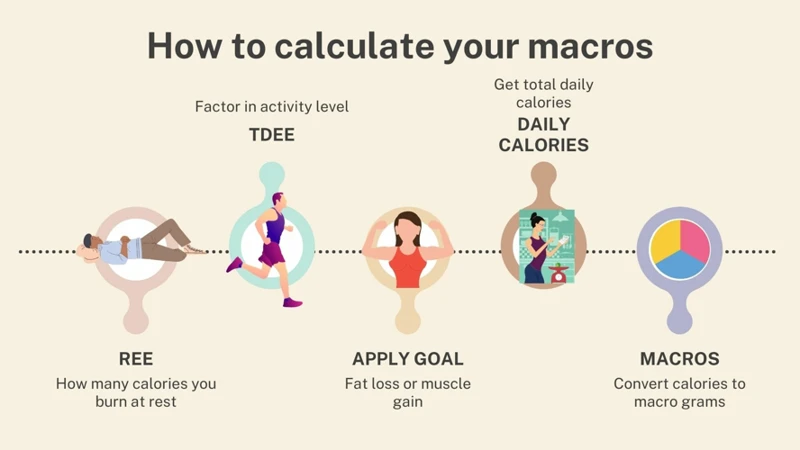
Ensuring that your American Bobtail cat receives an appropriate macronutrient balance is critical for their overall health and wellbeing. This requires calculating and providing the correct ratio of protein, fat, and carbohydrates in their diet.
Protein, Fat, and Carbohydrate Requirements
American Bobtail cats require a high-protein, moderate-fat, and low-carbohydrate diet. Cats are obligate carnivores, which means they need a diet rich in animal protein to meet their nutritional requirements. A protein-rich diet helps support muscle growth and maintenance, as well as supporting a healthy immune system.
Fat is also essential in a cat’s diet as it provides energy and supports many bodily functions, including healthy skin, coat, and vision. However, too much fat can lead to obesity, so it’s crucial to ensure that the diet contains the appropriate amount of fat.
Cats have a low-carbohydrate requirement as they have evolved to metabolize energy from protein and fat, rather than carbohydrates. Carbohydrates can also contribute to weight gain, and some cats may have difficulty digesting certain types of carbohydrates.
How to Calculate Macronutrient Ratios
To calculate the macronutrient ratio for your American Bobtail cat, you need to know their individual calorie requirements and the percentage breakdown of protein, fat, and carbohydrates that they need. This can be achieved by using a pet food calculator or working with a veterinary nutritionist to ensure your cat’s nutritional needs are met.
Pet food calculators take into account your cat’s weight, activity level, and other factors to determine their daily caloric needs. From there, you can use the recommended macronutrient ratios for American Bobtail cats to determine how much of each macronutrient they should consume.
For example, an average American Bobtail cat may require approximately 250-300 calories per day. To meet their macronutrient requirements, they should consume around 50-60% of their calories from protein, 25-35% from fat, and 5-10% from carbohydrates.
Calculating macronutrient ratios may seem complicated, but it ensures that your cat receives the precise nutritional balance they need to thrive.
By keeping in mind the macronutrient requirements discussed above and partnering with a veterinary nutritionist, you can develop a healthy and balanced diet for your American Bobtail cat. Proper nutrition is critical in ensuring good health and a long life for your feline friend.
Protein, Fat, and Carbohydrate Requirements
When it comes to homemade diets for American Bobtail cats, it’s essential to take into account their macronutrient requirements. Primarily, proteins, fats, and carbohydrates play a significant role in your cat’s health and well-being. Protein is necessary for muscle growth and development and ensuring the proper functioning of organs. Fats provide energy, insulation, and help in the absorption of vitamins, while carbohydrates supply energy and aid in digestion.
The protein, fat, and carbohydrate requirements for American Bobtail cats differ from those of other cats. They need an adequate supply of high-quality, easily digestible protein to maintain their muscle mass, and fats to provide energy and insulation. Additionally, too many carbohydrates or low-quality protein can lead to obesity, diabetes, and digestion problems.
Protein must make up at least 25% of their diet, while fats should account for 9-15% of their total caloric intake. However, keep in mind that these are the minimum requirements, and the actual intake may vary depending on the cat’s age, weight, activity level, and overall health.
It’s crucial to note that American Bobtail cats are obligate carnivores, meaning they require animal-based protein sources. A homemade diet should prioritize high-quality animal proteins such as chicken, turkey, salmon, beef, or lamb. Including organ meats such as liver, kidney or heart can also provide essential nutrients, vitamins, and minerals.
Fats should be obtained from high-quality sources such as chicken fat, fish oil, and flaxseed oil. These sources contain essential fatty acids that play a vital role in maintaining healthy skin and coat in your beloved pet. Similarly, carbohydrates should come from whole food sources like green vegetables, fruits, or whole grains, as they contain beneficial fiber.
All in all, a homemade diet for American Bobtail cats must meet their macronutrient requirements while being balanced and nutritious. It’s essential to calculate the appropriate ratios, select high-quality ingredients, and prepare and store food correctly to ensure your cat remains healthy and happy.
How to Calculate Macronutrient Ratios
To calculate the macronutrient ratios for homemade cat food, you need to follow a few steps. First, you need to determine the daily caloric requirements for your American Bobtail cat based on their weight, age, and activity level. You can use an online cat food calculator or consult with your veterinarian to get an estimate of the daily calorie needs for your cat.
Once you have the daily caloric requirements, you can use the National Research Council’s (NRC) guidelines for cats to determine the macronutrient ratios. According to the NRC, the recommended macronutrient ratios for adult cats are as follows:
- Protein: 25-45% of calories
- Fat: 20-50% of calories
- Carbohydrates: 0-30% of calories
These ratios can vary slightly depending on the cat’s age, activity level, and overall health. Kittens and pregnant cats may require higher levels of protein and fat, while senior cats may require lower levels.
To calculate the exact macronutrient ratios for your homemade cat food recipe, you need to convert the calorie percentages into grams. For example, let’s say your cat needs 300 calories per day and you want to give them a diet that is 40% protein, 40% fat, and 20% carbohydrates. You would calculate the following:
Protein: 300 calories x 0.40 = 120 calories from protein
Fat: 300 calories x 0.40 = 120 calories from fat
Carbohydrates: 300 calories x 0.20 = 60 calories from carbohydrates
Next, you need to convert the calorie amounts into grams. Since proteins and carbohydrates contain 4 calories per gram, and fat contains 9 calories per gram, you would calculate the following:
Protein: 120 calories ÷ 4 calories per gram = 30 grams of protein
Fat: 120 calories ÷ 9 calories per gram = 13.3 grams of fat (rounded up to 14 grams)
Carbohydrates: 60 calories ÷ 4 calories per gram = 15 grams of carbohydrates
This calculation results in a homemade cat food recipe that contains approximately 30 grams of protein, 14 grams of fat, and 15 grams of carbohydrates per day. It’s important to note that these are just rough estimates and may need to be adjusted based on your cat’s individual needs.
By following these steps to calculate macronutrient ratios for homemade cat food, you can ensure that your American Bobtail cat is getting a balanced diet that meets their nutritional needs.
Selecting Ingredients for Homemade Cat Food
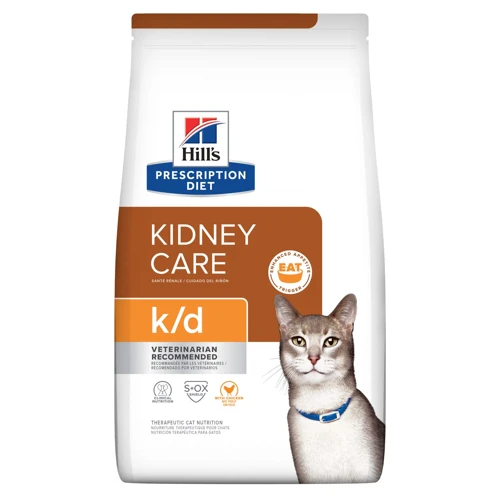
When it comes to selecting ingredients for homemade cat food, it’s important to consider the specific nutritional needs of your American Bobtail cat. As obligate carnivores, these cats need a diet that’s high in protein, moderate in fat, and low in carbohydrates. Here are some key considerations for selecting ingredients:
Protein Sources: Meat should be the primary ingredient in your cat’s diet, and the protein should come from animal sources. Good options include chicken, turkey, beef, and fish. Organ meats like liver and kidney can also be beneficial, but should be fed in moderation due to their high vitamin A content.
Fat Sources: While your cat doesn’t need as much fat as protein, it’s still an important part of their diet. Look for healthy sources of fat, such as chicken or turkey skin, egg yolks, and fish oil. Be sure to avoid sources high in unhealthy fats like saturated or trans fats.
Carbohydrate Sources: Cats do not require carbohydrates, but small amounts can be included in their diets. Good options include cooked sweet potato or pumpkin, brown rice, and oats. However, it’s important to keep carbohydrates to a minimum to avoid weight gain and other health issues.
Other Nutrient Sources: In addition to protein, fat, and carbohydrates, your cat’s diet should include other key nutrients like vitamins, minerals, and fiber. These can be sourced from ingredients like leafy greens, fruits, and vegetables. It’s important to research which specific nutrients your cat needs and include them in appropriate amounts.
Keep in mind that not all ingredients are created equal, and the quality of the ingredients you choose can have a big impact on your cat’s health. Look for human-grade meats and organic produce when possible, and avoid ingredients that are highly processed or contain artificial additives.
Ultimately, the key to selecting ingredients for homemade cat food is to find a balance that meets your cat’s unique nutritional needs while also being palatable and enjoyable for them to eat. Consider consulting with a veterinarian or veterinary nutritionist for guidance on creating a balanced and nutritious homemade diet for your American Bobtail cat.
Protein Sources
Protein is a crucial macronutrient for American Bobtail cats as it helps build and repair their muscles, bones, and tissues. When selecting protein sources for homemade cat food, it’s essential to choose high-quality options that are easy for cats to digest.
Chicken: Chicken is a great source of protein that many cats love. It’s a lean meat that’s low in fat and easy for cats to digest. However, it’s essential to ensure you cook the chicken thoroughly to avoid any harmful bacteria that may harm your cat.
Turkey: Turkey is another lean source of protein that’s safe for cats to eat. Like chicken, it’s low in fat and easy to digest. Just make sure you cook the turkey thoroughly before feeding it to your cat.
Beef: While beef is an excellent source of protein, it’s higher in fat than chicken or turkey. It’s still a safe option for cats, but you’ll want to choose leaner cuts of meat. Additionally, ensure it’s cooked to avoid harmful bacteria.
Fish: Fish is a high-quality protein source that contains essential omega-3 fatty acids that are beneficial for cats’ fur and skin. However, not all types of fish are safe for cats to eat, and some can contain harmful toxins. Stick to cat-friendly fish such as salmon, tuna, or sardines, and ensure they are cooked thoroughly.
Eggs: Eggs are an excellent source of protein and are safe for cats to eat. They can be cooked or served raw, but if you choose to serve raw, ensure you use pasteurized eggs to avoid any harmful bacteria.
It’s important to note that while protein is vital, it’s not the only nutrient your cat needs. Be sure to include a variety of other nutrient sources, such as fats, carbohydrates, vitamins, and minerals, to ensure your cat’s diet is balanced and complete. Also, talk to your vet about your cat’s specific dietary needs and any health concerns before making any significant changes to their diet.
Fat Sources
When selecting fat sources for your American Bobtail cat’s homemade diet, it’s important to choose healthy options that provide essential fatty acids. Some good sources of healthy fats include fish oils, coconut oil, flaxseed oil, and chicken fat.
Fish oils: Fish oils are rich in omega-3 fatty acids, which play a crucial role in brain function and overall health. They also help reduce inflammation and protect against heart disease. You can add fish oil to your cat’s homemade food by mixing it in with the other ingredients or by drizzling it over the top.
Coconut oil: Coconut oil is a great source of medium-chain triglycerides (MCTs), which provide energy and support a healthy immune system. It also has antimicrobial properties that can help fight off infections. Coconut oil can be added to homemade cat food recipes as a source of fat or used as a supplement to help with digestion.
Flaxseed oil: Flaxseed oil is high in alpha-linolenic acid (ALA), an omega-3 fatty acid that is essential for healthy cell function. It’s also a good source of lignans, which have antioxidant properties. Flaxseed oil can be added to homemade cat food in small amounts as a source of fat, but it should not be the only source of fat in the diet.
Chicken fat: Chicken fat is a good source of linoleic acid, an omega-6 fatty acid that supports healthy skin and coat. It’s also a source of energy and adds flavor to homemade cat food recipes. However, it’s important to choose high-quality chicken fat and use it in moderation to avoid excess calories.
When selecting fat sources for your cat’s homemade diet, it’s important to pay attention to the overall ratio of omega-3 to omega-6 fatty acids. Most commercial cat foods have a ratio that is too high in omega-6 fatty acids, which can contribute to inflammation and chronic disease. By adding healthy sources of omega-3 fatty acids to your cat’s diet, you can help balance out this ratio and improve their overall health.
Carbohydrate Sources
Carbohydrates are an important source of energy in any feline’s diet. But when it comes to American Bobtail cats, carbohydrates have a very limited role to play. This is because, unlike humans, cats are obligate carnivores, which means their nutritional requirements are mostly fulfilled through animal-based proteins and fats.
Despite the fact that American Bobtails do not require a very high intake of carbohydrates, they can still benefit from the inclusion of some carbs in their diet. The key to selecting a good carbohydrate source is to choose one that is easily digestible by cats and does not cause any digestive upset or allergic reactions.
One excellent carbohydrate source that is suitable for American Bobtail cats is sweet potato. Sweet potatoes are great because they are not only nutritious, but they are also easy on the stomach. They contain a good balance of fiber, vitamins, and antioxidants that can help boost your cat’s immune system and promote overall health. Other good carbohydrate sources include brown rice, quinoa, and oatmeal.
It is important to keep in mind that cats have a limited ability to process and utilize carbohydrates compared to other macronutrients like protein and fat. It is recommended that carbs make up no more than 10% of a cat’s diet. Too many carbohydrates in a cat’s diet can lead to weight gain and other health issues.
By including a small amount of easily digestible carbohydrates in your American Bobtail cat’s diet, you can help ensure they are receiving a well-balanced meal. Just remember to keep these carb sources to a minimum and choose those that your cat can tolerate well. A balanced homemade diet that includes the right amount of protein, fat, and carbohydrates is essential to support their overall health and wellbeing.
Other Nutrient Sources
In addition to the primary macronutrients, protein, fat, and carbohydrates, American Bobtail cats require a range of other nutrients to maintain optimal health. These include vitamins, minerals, and various essential fatty acids.
Vitamins: Vitamins are essential organic compounds that are required in small quantities for a healthy metabolism. Feeding your American Bobtail cat a diet that includes a variety of fresh, whole foods will generally provide all the vitamins they need. However, you may want to supplement their diet with vitamins A, B-complex, C, D, E, and K, depending on the specifics of the homemade diet recipe.
Minerals: Minerals are inorganic elements that are essential for various biochemical reactions in your cat’s body. Some common minerals that you may want to include in your American Bobtail cat’s diet include calcium, phosphorus, magnesium, potassium, sodium, sulfur, and zinc.
Essential Fatty Acids: Essential fatty acids are fats that are required for optimal health, yet cannot be synthesized by your cat’s body. Instead, they must be obtained through their diet. Some important essential fatty acids include omega-3 and omega-6 fatty acids, which can be found in fish oil and flaxseed oil, respectively.
It’s important to note that getting the right balance of vitamins, minerals, and essential fatty acids can be a bit of a challenge when it comes to homemade cat food. It’s a good idea to consult with your vet or a professional animal nutritionist to ensure that your American Bobtail cat’s diet is properly balanced with all the essential nutrients they need to thrive.
Preparing and Storing Homemade Cat Food
As a responsible pet owner, ensuring that the homemade cat food you prepare for your American Bobtail cat is stored properly is crucial to maintain its nutritional value and prevent the growth of harmful bacteria. Here are some tips for preparing and storing homemade cat food:
Preparing Homemade Cat Food Recipes: Before cooking, make sure to wash your hands thoroughly and to sanitize all utensils, as well as any surfaces that have been in contact with raw ingredients. When cooking the food, ensure that all meat is cooked thoroughly and that fat is drained off, as it may cause digestive upset in cats. Additionally, make sure that any vegetables are cooked to a soft consistency and that any grains are well-cooked to aid in digestion.
Feeding Guidelines: Homemade cat food should be served in small portions, as overfeeding can cause obesity and other health problems in cats. As a general guideline, feed your American Bobtail cat between 3-5 small meals per day, depending on their age, activity level, and body weight. It is important to consult with a veterinarian to determine the recommended daily calorie intake for your cat and adjust their portion sizes accordingly.
Proper Storage and Handling: Once the homemade cat food is prepared, it should be stored in airtight containers in the refrigerator or freezer. Fresh cat food should be refrigerated and consumed within 2-3 days, while frozen food can last up to 2 months. Be sure to label all containers with the date the food was prepared and the ingredients used. When reheating the food, make sure to do so thoroughly and let it cool before serving to prevent burns to your cat’s mouth or esophagus.
Making homemade cat food for your American Bobtail cat can be a great way to ensure that they are receiving a properly balanced diet that suits their individual nutritional needs. However, it is important to follow proper storage and handling procedures to maintain the nutritional value of the food and prevent the growth of harmful bacteria. By taking the necessary precautions and following these guidelines, you can ensure that your cat is healthy and happy for years to come.
Homemade Cat Food Recipes
When it comes to feeding your American Bobtail cat a homemade diet, it’s crucial to make sure they are getting the right balance of macronutrients. However, the thought of preparing your cat’s food from scratch may seem daunting at first, especially when you’re not certain what recipes to follow.
Thankfully, there is plenty of inspiration and guidance available to help you create a variety of homemade cat food recipes that are both balanced and appealing to your furry friend’s taste buds.
Recipe 1: Chicken and Rice With Carrots and Peas
This recipe is a great option for American Bobtail cats who require a well-rounded diet with a good source of protein. To begin, combine cooked and shredded chicken breast with cooked brown rice, steamed carrots, and peas in a large mixing bowl.
Next, add in essential fatty acids to help with your cat’s coat and skin health – 1/4 teaspoon flaxseed oil, 1/4 teaspoon fish oil, and 1/4 teaspoon vitamin E oil. Mix all the ingredients together, and serve in portion-controlled amounts according to your cat’s weight and dietary requirements.
Recipe 2: Turkey and Quinoa Stew
For a hearty and nutritious homemade cat food recipe, this turkey and quinoa stew is a great option. In a large pot, sauté ground turkey with diced onion, garlic, and diced carrots until cooked. Add cooked quinoa, pureed peas or green beans, and steamed broccoli to the pot, along with a teaspoon of dried catnip.
Stir in a tablespoon of chicken broth to give the stew some extra flavor, and let the mixture simmer for a bit. Once cooked, allow the stew to cool and serve in portion-controlled amounts, again based on your cat’s weight and nutritional requirements.
Recipe 3: Fish and Sweet Potato Patties
If your American Bobtail cat enjoys seafood, this recipe is a great option. To make fish and sweet potato patties, combine flaked cooked fish, mashed sweet potato, an egg, and a tablespoon of chopped parsley in a mixing bowl.
Mix together and form into small patties or meatballs, and bake in the oven for approximately 15-20 minutes at 350°F. Serve cooled and portion-controlled according to your cat’s weight and nutritional needs.
Recipe 4: Beef and Vegetable Casserole
This recipe is perfect for American Bobtail cats who require a good source of iron-rich protein. To make the beef and vegetable casserole, sauté diced beef with diced carrots, peas, and spinach in a large pot.
Add a tablespoon of tomato paste and 1/4 teaspoon of dried rosemary for flavor, and stir in a small amount of water or chicken broth to make a gravy. Cook until the vegetables are soft and the beef is cooked through, and then serve in portion-controlled amounts based on your cat’s individual requirements.
It’s important to remember that each recipe should be adapted to suit your cat’s specific nutritional needs, including their weight, age, and any health issues they may have. Additionally, it’s recommended to consult with your veterinarian before making any changes to your cat’s diet, as they can offer valuable advice on the best way to provide the right balance of nutrients in your homemade cat food.
Feeding Guidelines
Feeding your American Bobtail cat a homemade diet can be a rewarding experience, but it’s important to follow proper feeding guidelines to ensure your cat receives all the necessary nutrients.
Portion Sizes
One of the most important aspects of feeding your cat a homemade diet is ensuring they receive the correct portion sizes. Overfeeding your cat can lead to obesity and health issues, while underfeeding can result in malnutrition.
To determine the appropriate portion size for your American Bobtail cat, consider their weight and activity level. A general rule of thumb is to feed 2-4% of their body weight in food per day, but this can vary based on individual needs.
Meal Frequency
It’s recommended to feed your cat two or more small meals throughout the day, rather than one large meal. This can help prevent overeating and aid in digestion.
Nutrient Balance
When preparing homemade cat food, it’s important to ensure all necessary nutrients are included in the diet. As discussed earlier, American Bobtail cats require a balance of protein, fat, and carbohydrates.
Additionally, including a variety of protein sources can help ensure they receive all essential amino acids. It’s also important to include sources of vitamins and minerals, such as fruits and vegetables, in appropriate amounts.
Supplementation
Despite your best efforts, it can be difficult to provide your cat with all necessary nutrients through homemade food alone. Consider supplementing with a high-quality cat vitamin and mineral supplement to ensure their needs are met.
Consultation with a Veterinarian
Before transitioning your cat to a homemade diet, it’s recommended to consult with a veterinarian. They can provide guidance on appropriate nutrient ratios, feeding guidelines, and ensure any specific health conditions are taken into consideration.
Following proper feeding guidelines is essential for the health and wellbeing of your American Bobtail cat on a homemade diet.
Proper Storage and Handling
After creating homemade cat food, it’s crucial to ensure that it’s properly stored and handled to keep it safe and free from contamination. Improper storage can lead to the growth of harmful bacteria, which can cause digestive issues and even serious illnesses in your American Bobtail cat.
Refrigeration: You should always refrigerate homemade cat food after it has cooled down to room temperature. Store the food in an airtight container made of glass, ceramic or food grade plastic in the refrigerator to keep it fresh for up to 5 days. Be sure that the temperature of your refrigerator is set at or below 40 degrees Fahrenheit in order to prevent bacterial growth.
Freezing: If you have made a large batch of cat food, or want to store some for future use, consider freezing it. You can store homemade cat food in the freezer for up to three months. Place individual portions in airtight containers or plastic bags and lay them flat in the freezer. This helps them freeze faster and can prevent freezer burn. Be sure to label the containers or bags with the date that you made the cat food so that you can keep track of how long it has been stored.
Thawing: Thaw frozen cat food in the refrigerator the night before you plan to use it. Never thaw cat food on the counter at room temperature or in the microwave, as this can result in uneven thawing and the growth of harmful bacteria. Avoid refreezing the cat food, as this can degrade the quality and safety of the food.
Serving: When serving homemade cat food, be sure to toss out any uneaten food after about 30 minutes. This helps to prevent the growth of harmful bacteria in the food, which can cause your American Bobtail cat to become ill.
By following the proper storage and handling guidelines, you can keep your American Bobtail cat safe and healthy while enjoying the benefits of homemade cat food.
Conclusion
After learning all about macronutrients and how to balance them in homemade diets for American Bobtail cats, you should feel confident in feeding your furry friend a healthy and well-rounded meal. Remember that cats require a high amount of protein and fat, as well as some carbohydrates to support their energy needs.
When preparing homemade cat food, always choose high-quality and safe ingredients, and be sure to calculate the macronutrient ratios properly. Keep in mind that not all ingredients are safe for cats and some can be toxic to them, so it’s important to do your research before feeding anything new to your cat.
Proper preparation and storage of homemade cat food is also crucial in ensuring that your cat is getting safe and nutritious meals. Follow recommended feeding guidelines and store the food in airtight containers in the refrigerator or freezer.
In conclusion, taking the time to balance macronutrients and prepare homemade cat food can be a rewarding and satisfying experience for both you and your American Bobtail cat. With a little bit of knowledge and effort, you can provide your furry companion with a healthy and enjoyable diet.
Frequently Asked Questions
What are the best protein sources for homemade cat food?
The best protein sources for homemade cat food are poultry, fish, and beef. These meats are high in protein and provide essential amino acids that cats need for good health.
Should carbohydrates be included in homemade cat food?
Yes, carbohydrates should be included in homemade cat food, but in moderate amounts. Good sources of carbohydrates for cats include vegetables like spinach, carrots, and green beans.
Is it important to balance macronutrients in homemade cat food?
Yes, it is crucial to balance macronutrients in homemade cat food. Cats need specific ratios of protein, fat, and carbohydrates to support their health, and an unbalanced diet can lead to nutrient deficiencies or health problems.
Can I use grains in homemade cat food?
While some cats can tolerate grains in their diet, others may have allergies or digestive issues related to grains. It is usually best to avoid grains in homemade cat food unless your veterinarian recommends otherwise.
What types of fat should be used in homemade cat food?
The best types of fat for homemade cat food are animal fats like chicken fat or fish oil. These fats provide essential fatty acids that cats need for good health.
Is it safe to feed my cat only homemade cat food?
Feeding your cat only homemade cat food can be safe, but it is important to consult with your veterinarian to ensure that your cat is receiving all of the nutrients that they need. Your veterinarian can help you develop a balanced diet plan and monitor your cat’s health.
How long can homemade cat food be stored?
Homemade cat food should be stored in the refrigerator and can last up to three days. Any food that is not used within three days should be discarded.
What supplements should I add to homemade cat food?
The supplements that you should add to homemade cat food will depend on your cat’s individual needs. However, some beneficial supplements include omega-3 fatty acids, probiotics, and taurine.
What are the most common mistakes that people make when preparing homemade cat food?
The most common mistakes that people make when preparing homemade cat food include using the wrong ingredients or ratios of macronutrients, not supplementing properly, and not properly handling or storing the food.
Can I feed my American Bobtail cat a vegetarian diet?
No, American Bobtail cats are obligate carnivores and require meat in their diet to receive essential nutrients like taurine. A vegetarian diet would not provide your cat with the nutrients that they need for good health.

